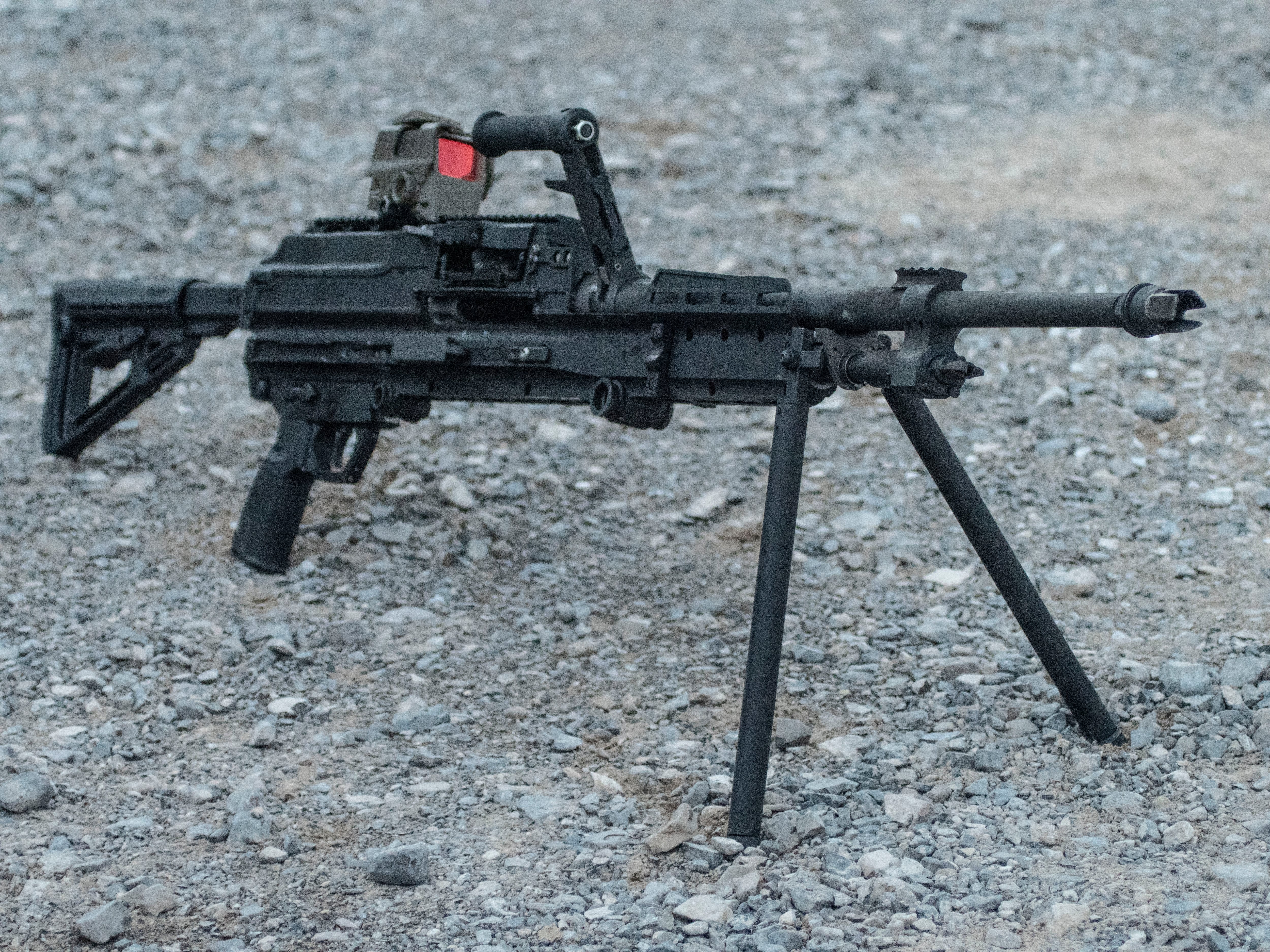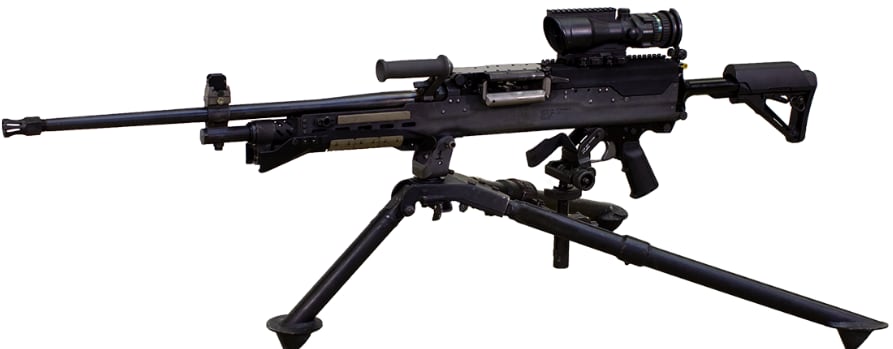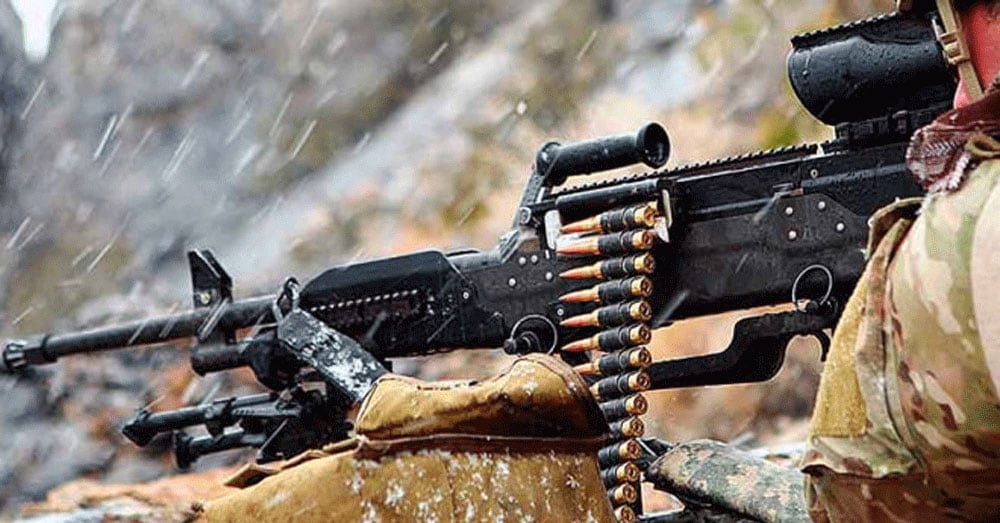TAMPA, Fla. — Special operators say the next machine gun should deliver the power, range and accuracy of a .50 caliber in the size of a platoon-level M240 machine gun.
That .338 Norma Magnum Lightweight Medium Machine Gun, to put it lightly, is a “big advancement” in small arms for spec ops, one expert said.
RELATED

The initiative launched back in 2017 and, in the ensuing years, two companies, Sig Sauer and General Dynamics, have primarily been vying for the contract.
A lieutenant colonel over Special Operations Forces’ lethality program for Special Operations Command shared details of this and other small arms programs during his presentation Tuesday at the SOF Industry Conference held here by the National Defense Industrial Association.
Due to media ground rules, officials at the rank of O5 and below are not identified by name due to the operational nature of their work with SOCOM.

“This is basically going to give us firepower, not exactly, of a .50 caliber in a M240 form factor,” the official said. “It is a big advancement in SOF lethality and there are going to be a lot of accoutrements.”
The current M240 machine gun is chambered in 7.62mm NATO. It’s a round that’s been in service for more than half a century and has seen many advancements but, most experts agree, has reached the limits of its potential for range and lethality.
The Marine Corps and the Army recently added a multi-barrel sniper rifle that can shoot 7.62mm, .300 Winchester Magnum and .338 Norma Magnum, Marine Corps Times reported.
The official said the command is still working through the competition, but expects delivery of the machine gun by fiscal 2024.
Sig Sauer offered the Sig Sauer Lightweight Machine Gun, or SLMG, a 20-pound, foldable stock machine gun designed to be fed from either side. That feature allows the weapon to be used effectively in dismounted, aircraft or ground vehicle operations.
And the Sig Sauer version allows for an adjustable gas block that matches pressure requirements for a variety of suppressors.
In 2019, Sig Sauer defense product manager Cory McQuilkin told Army Times the suppressor add-on hadn’t changed the weapon’s rate of fire, a previous concern with these types of systems.
Every small arm option now factors in suppressors.
In 2017, Sig Sauer won the sidearm replacement contract for all of the services with the Modular Handgun System program. It also won the carbine and squad machine gun weapon replacement contract earlier this year for the Next Generation Squad Weapon program.
General Dynamics touts that at ranges out to 1,000m, its weapon combo can penetrate Level III body armor and knock out soft-skinned vehicles.

Another ongoing small arms replacement is the Mid-Range Gas Gun, chambered in 6.5 Creedmoor.
That weapon will come a bit earlier, expected to begin deliveries this year, according to slides the official displayed.
The next step for the gas gun is creating an assault variant, useful for airborne operations and close-quarters fighting in built-up areas.
For both weapons, the key add-ons will be “accoutrements,” the official said. That means optics, accessories to strap onto the weapon and, most importantly, new types of ammo.
He said forces want armor-piercing rounds, training rounds and “something that acts like a tracer.”
The services have been after a “one-way tracer” for years now. That’s because when a shooter fires a tracer, the light emitted can be seen from both sides. That’s helpful for a shooter “walking in rounds” on a target with others firing in their formation. But it works both ways, meaning the enemy can see where they’re shooting from and target them accordingly.
Todd South has written about crime, courts, government and the military for multiple publications since 2004 and was named a 2014 Pulitzer finalist for a co-written project on witness intimidation. Todd is a Marine veteran of the Iraq War.





